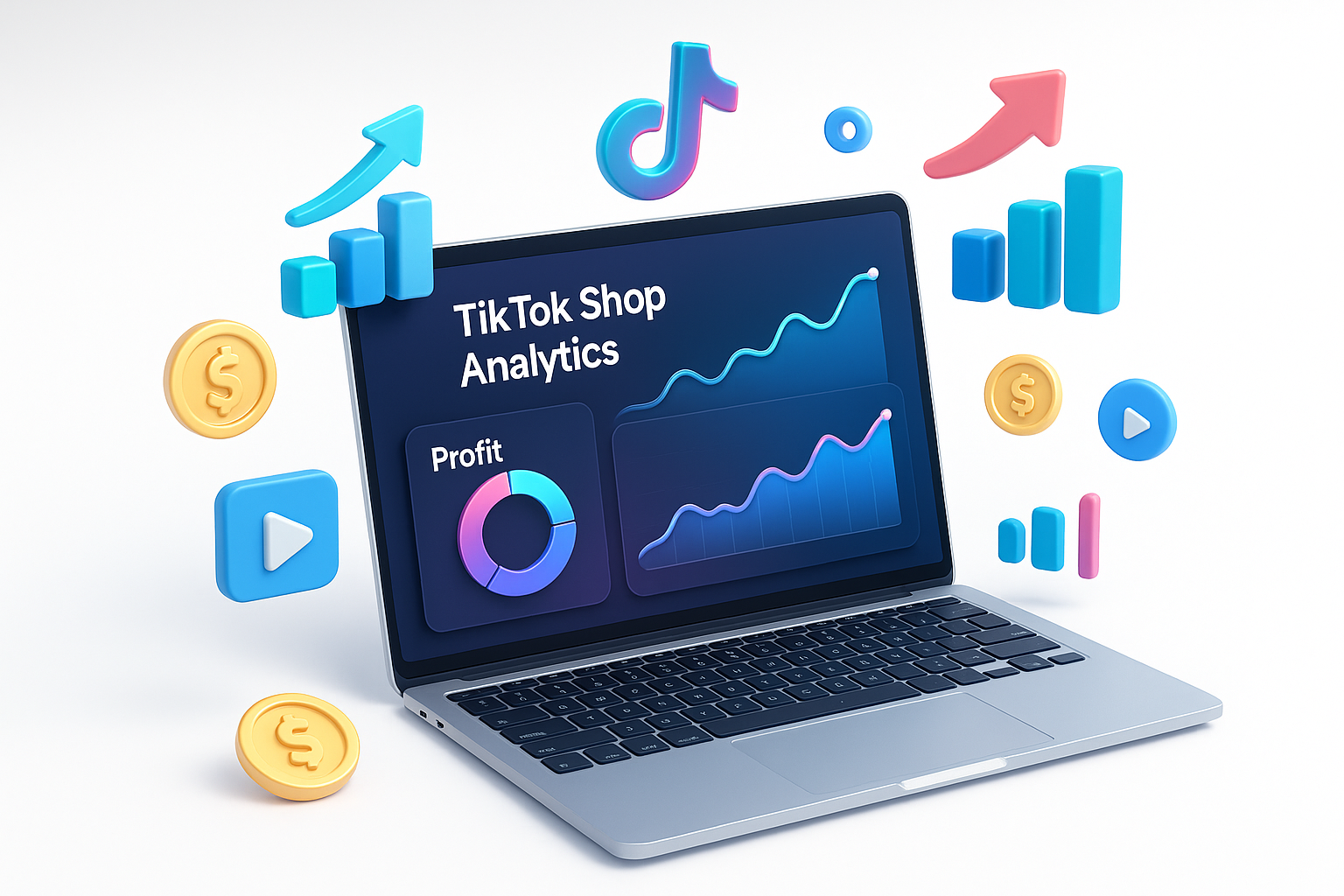Early Adopter Program is now open - 2 months free + 50% OFF for 12 months. Only 7 spots left.
Book a Demo CallEarly Adopter Program is now open - 2 months free + 50% OFF for 12 months. Only 7 spots left.
Book a Demo Call
TikTok Shop has exploded into one of the fastest-growing sales channels for eCommerce sellers, but here's the uncomfortable truth: most sellers have no idea what their actual profit margins look like. Between platform fees, affiliate commissions, shipping costs, and ad spend, the money flowing out can quietly erode what looks like a winning product on the surface.
If you're selling on TikTok Shop and you're not using a profit calculator built specifically for the platform's fee structure, you're essentially flying blind. This article breaks down exactly how to calculate your real TikTok Shop profit, what fees you need to account for, and how modern seller analytics tools can help you make smarter decisions faster.
The problem isn't that sellers don't care about profit. It's that TikTok Shop's fee structure is layered, dynamic, and easy to underestimate. Unlike traditional eCommerce platforms where you pay a flat monthly fee or a simple transaction percentage, TikTok Shop combines multiple cost layers that vary by category, promotion type, and fulfillment method.
Here's what catches sellers off guard:
When you add these up, a product that appears to generate a 40% margin on paper might actually deliver closer to 15% after all fees and costs. That's why a TikTok Shop profit calculator isn't optional—it's essential infrastructure for anyone serious about scaling.
Before you can improve your margins, you need to see them clearly. Here's a straightforward formula you can use to calculate your true profit per sale:
Net Profit = (Sale Price) - (Product Cost) - (TikTok Shop Fees) - (Affiliate Commission) - (Shipping Cost) - (Ad Spend per Unit)
This is the foundation. Your sale price is what the customer pays. Your product cost includes manufacturing, sourcing, or wholesale price, plus any import duties or inbound shipping to your warehouse.
Add up your referral fee percentage and payment processing fee. For example, if you're selling a beauty product for $50 with a 6% referral fee and 2.9% payment processing fee, your TikTok Shop fees would be approximately $4.45.
If you're running affiliate campaigns with creators, multiply your sale price by the commission rate you've agreed to. A 20% commission on a $50 product is $10. This is often the largest variable cost for TikTok Shop sellers.
Whether you're using a third-party logistics provider or TikTok's own fulfillment, calculate the true cost per unit shipped. Don't forget packaging materials and labor if you're fulfilling in-house.
Divide your total TikTok ad spend by the number of units sold during the same period. If you spent $500 on ads and sold 100 units, that's $5 in ad cost per unit. This number fluctuates, but it's critical for understanding true profitability.
Once you run this formula across your product catalog, you'll quickly see which items are actually profitable and which ones are costing you money despite strong sales volume.
Calculating profit once is helpful. Tracking it continuously is transformative. That's where TikTok seller analytics come into play. The platform's native Seller Center provides basic sales data, but it doesn't give you a real-time view of profitability, especially when you're running campaigns across multiple channels or testing different creator partnerships.
This is where a tool like Dashboardly becomes invaluable. Using Dashboardly, sellers can track real-time ROI from TikTok Shop in one unified dashboard, pulling in data from ad platforms, affiliate networks, and fulfillment systems to show true profit margins at the product and campaign level. Instead of exporting spreadsheets and manually reconciling numbers, you get a live view of what's working and what's bleeding cash.
If you're only watching your total sales number, you're missing the story. Here are the metrics that actually matter:
When you track these metrics consistently, you stop guessing and start optimizing. You can shift budget toward high-margin products, renegotiate creator commissions, and eliminate SKUs that look good on the surface but hurt your bottom line.
Even experienced sellers make these errors when they first launch on TikTok Shop:
Overestimating organic reach: TikTok's algorithm is powerful, but relying solely on organic content without a paid strategy or creator partnerships limits scale. You need a balanced approach.
Ignoring shipping speed expectations: TikTok Shop customers expect Amazon-like delivery times. Slow shipping kills repeat purchases and increases return rates.
Chasing viral products without margin analysis: A product that goes viral but has a 5% margin after fees isn't a win—it's a cash flow trap.
Not testing price points: Small price increases can dramatically improve margins without hurting conversion if your product and positioning are strong.
Failing to track data daily: Profitability can shift quickly based on ad performance, creator activity, and seasonal demand. Weekly reviews aren't enough.
TikTok Shop isn't a get-rich-quick platform. It's a legitimate sales channel that rewards sellers who treat it like a real business—with proper financial tracking, strategic creator partnerships, and relentless focus on unit economics.
The sellers who win long-term are the ones who know their numbers cold. They use a TikTok Shop profit calculator not as a one-time exercise, but as a daily habit. They track TikTok seller analytics with the same rigor they apply to Amazon or Shopify. And they make decisions based on data, not hype.
Whether you're just starting out or you're already doing six figures a month, the principle is the same: you can't improve what you don't measure. Get clear on your true profit margins, eliminate the guesswork, and build a TikTok Shop business that's not just busy—but genuinely profitable.
Explore expert tips, actionable guides, and proven strategies to help you track profits, optimize inventory, and scale your TikTok Shop success

Track real-time sales, monitor inventory, and optimize profits - all from one powerful dashboard.



